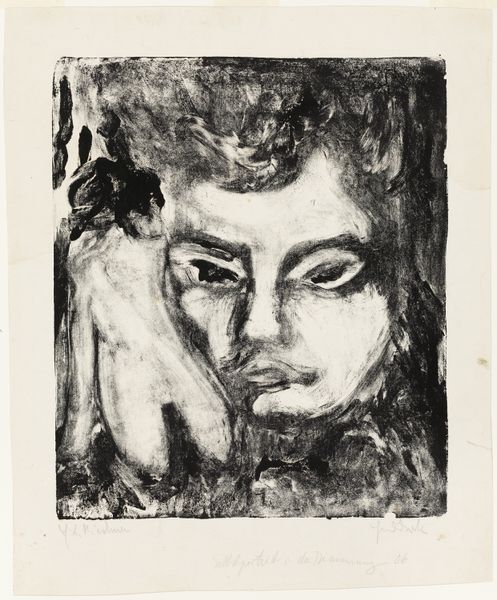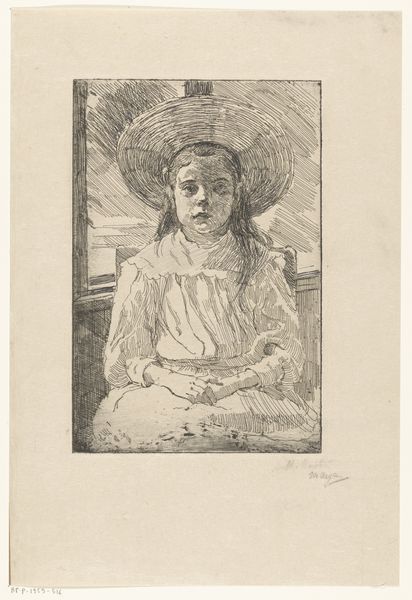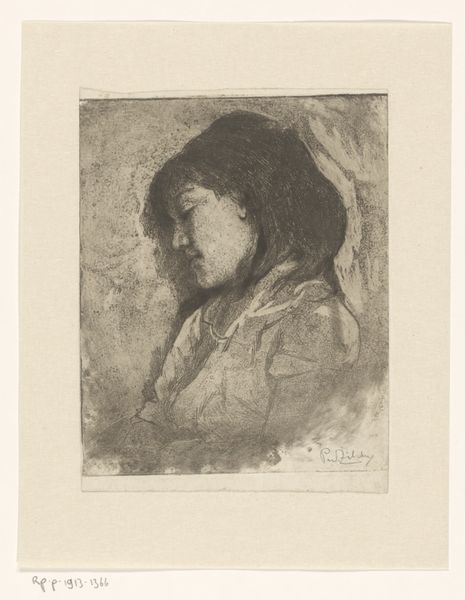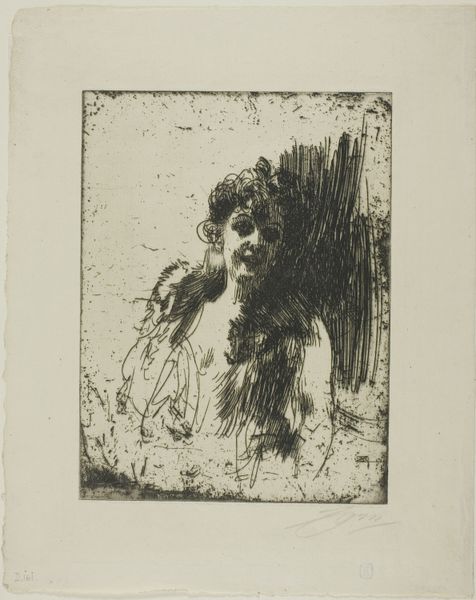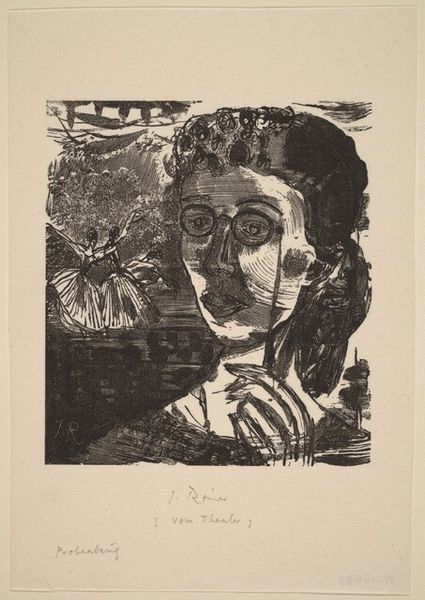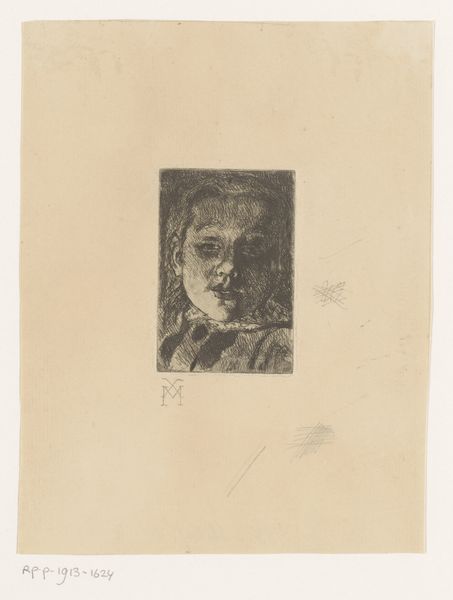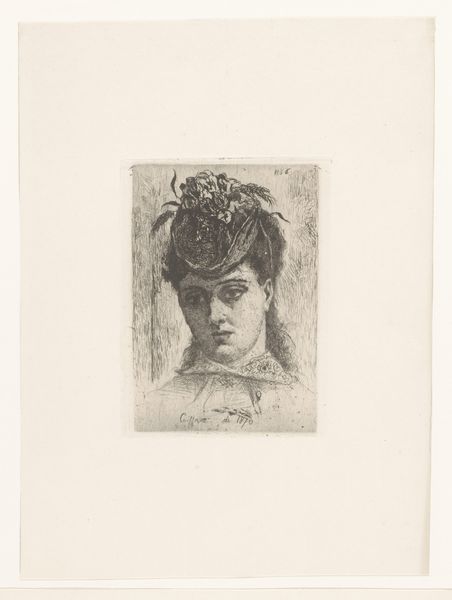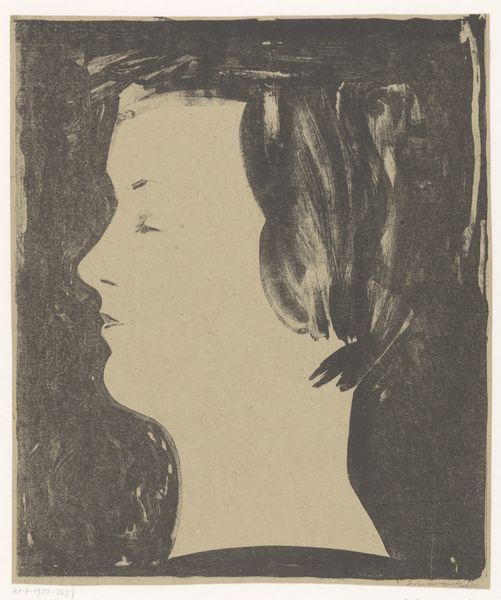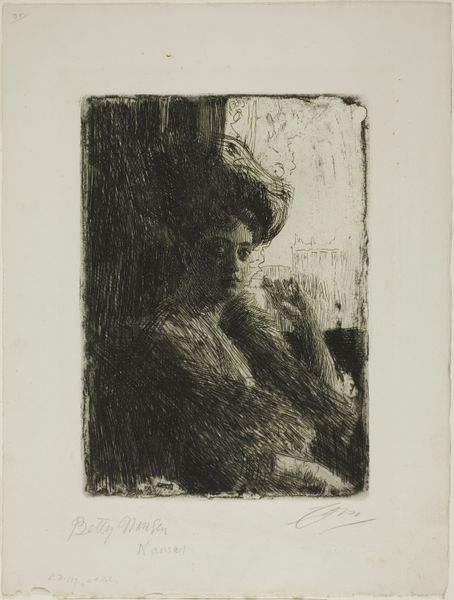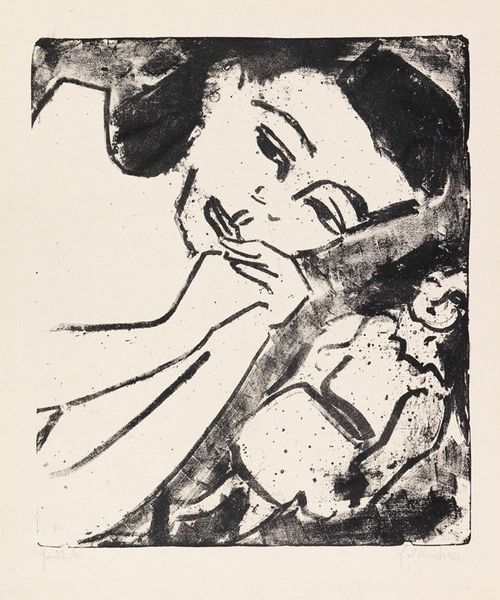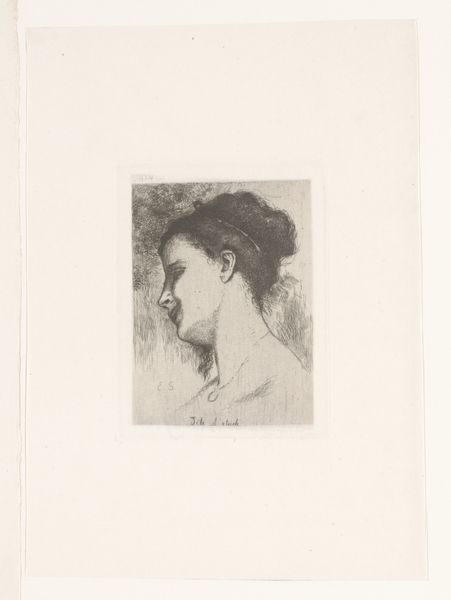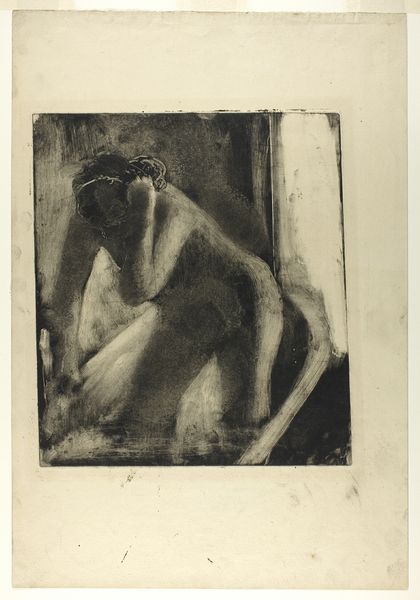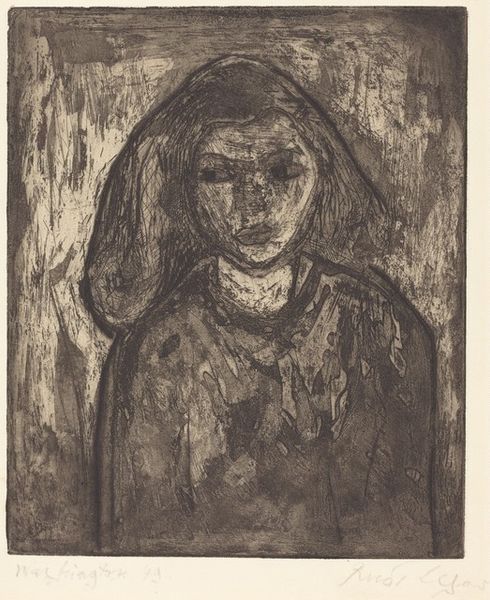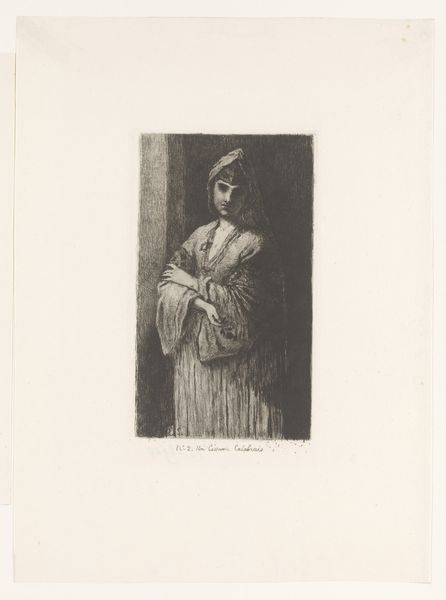
drawing, lithography, print, woodcut
#
portrait
#
drawing
#
lithography
# print
#
german-expressionism
#
figuration
#
linocut print
#
woodcut
#
monochrome
Copyright: Public Domain
Curator: Ernst Ludwig Kirchner created this print, originally titled "Junges Mädchen" or "Young Girl," around 1909. It's a stark, powerful example of German Expressionism. What's your immediate take on this? Editor: Striking. It hits you with a directness. The black and white contrast is bold and the gaze... intense. There's a rawness, an almost uncomfortable intimacy. Curator: That rawness is quintessential Kirchner, who was a founding member of Die Brücke, a group of German Expressionist artists who often explored themes of alienation, urban life, and raw emotion through distortion and simplification. Editor: Expressionism always fascinates me because it feels deeply tied to its specific moment, a pre-war Europe grappling with seismic shifts. It speaks to anxieties, repressed desires... this young woman embodies some of that turmoil, doesn't she? The lack of idealization. Curator: Precisely. Traditional portraiture sought to flatter. But artists like Kirchner sought to reveal inner states. The heavy lines and sharp angles aren't about capturing her physical likeness but projecting her psychological presence. It's less about the individual girl, perhaps, and more about youth itself at that time, or even femininity. Editor: Absolutely. And look at the way her figure is framed. The negative space, it's almost aggressive, carving her out from the background. The roughly rendered forms convey not just emotion but perhaps a certain precariousness to her status. The nude form was being hotly debated, in line with emerging radicalized theories concerning gender and class, during this period. Curator: Also consider how prints like this one allowed Expressionist artists to reach wider audiences. Unlike unique paintings, prints could be reproduced and circulated, disseminating their ideas and challenging bourgeois artistic sensibilities on a much broader scale. Editor: It really democratizes art, making potent and unsettling imagery accessible. You have this beautiful and intriguing image capable of sparking public conversation around class and the gaze of women at a time when society was facing an inflection point. I look at this image, and I am transported. Curator: Indeed. The expressive qualities coupled with reproduction created this lasting legacy of early German Expressionism, in which Kirchner remains a vanguard figure. Editor: Thank you. Reflecting on this portrait and thinking about youth, representation, and the sociopolitical context just enriches the work with such vitality.
Comments
No comments
Be the first to comment and join the conversation on the ultimate creative platform.
